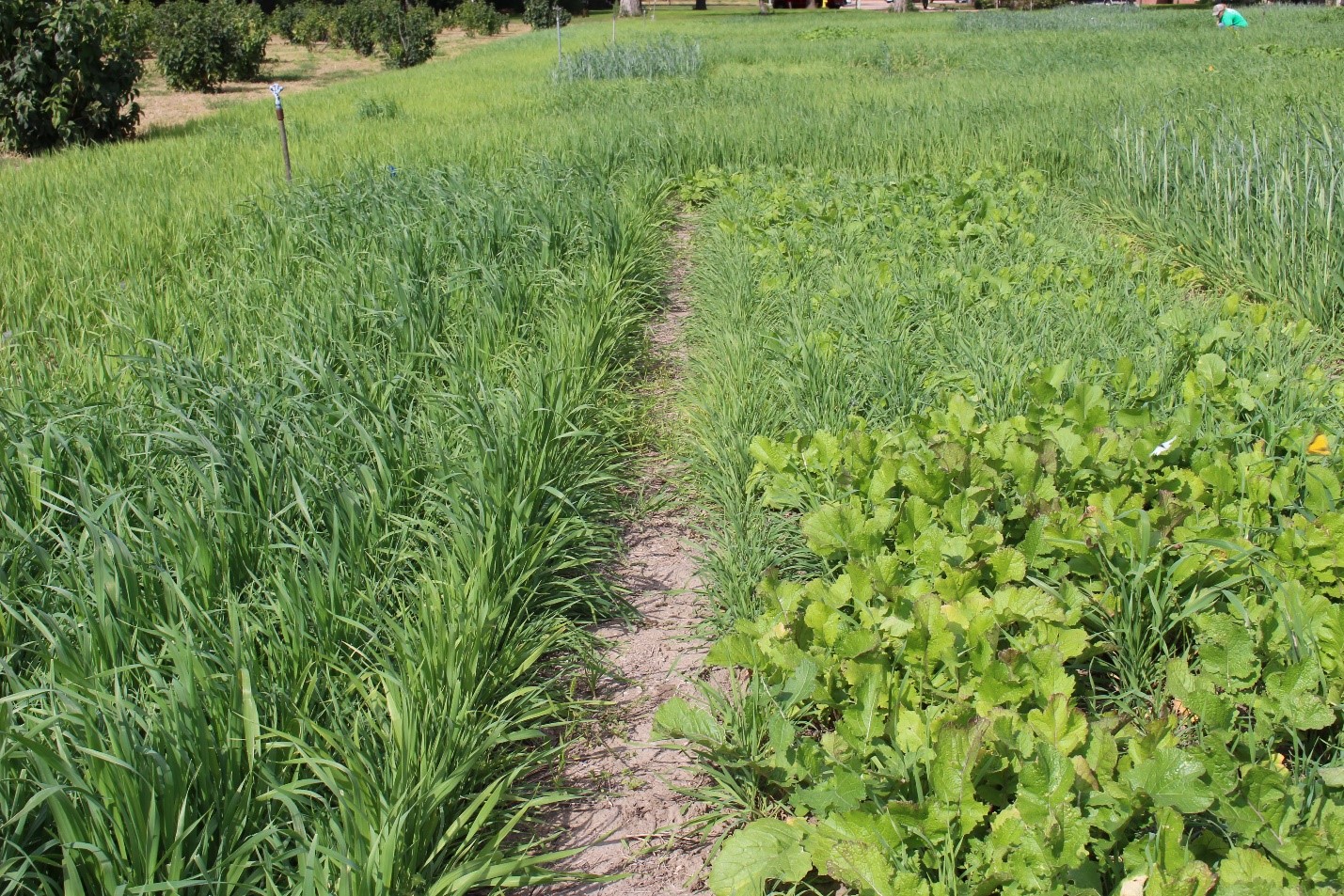
By Jerry Volesky, Nebraska Extension Range and Forage Specialist
August to early September is a time when some producers are planting various annual forages or cover crop mixtures for fall forage. This typically includes non-winter hardy small grain cereals such as oats and spring varieties of triticale, barley, or wheat. Brassicas such as turnips, rape, or kale can be mixed with these small grain cereal grasses. Most brassicas have high energy content even when mature and tend to maintain their quality later into the winter than the small grain cereal grasses.
Another option to this practice can be to plant a mixture of winter hardy and non-winter hardy species in order to have both fall and spring forage from a single planting operation. Common winter-hardy species include cereal rye, winter wheat, triticale, or barley. Any of these, paired with a non-winter hardy species, can result in a several different 2-way combinations (Figures 1 https://go.unl.edu/pzjg and 2 https://go.unl.edu/787h).
Several 2-way non-winter hardy and winter hardy mixtures were evaluated in recent plot trials at the UNL West Central Research and Extension Center in North Platte (Table 1 https://go.unl.edu/9t4z). For each species in the mix, they were planted at one-half the seeding rate of what would be used for a monoculture planting. In a rye and oats mix for example, oats were seeded at a rate of 1 ½ bushels per acre and rye at 1 bushel per acre. Monocultures of the different species seeded at the full rate were also included for comparison purposes.
Including the non-winter hardy species (oats, spring triticale, turnips) significantly increased fall forage yield in all cases. Spring yield of the winter hardy species (rye and winter triticale) in monocultures at full seeding rate was higher that than their respective yield in the 2-way mix. Overall, total yield of winter hardy and non-winter hardy mixtures was similar to that of the winter hardy monocultures. While the non-winter hardy forages could be replanted in the spring, mixing the non-winter hardy and winter hardy species in a late summer planting will result in more fall forage and a moderate amount of early spring forage from the winter hardy species; all from a single planting operation.
To listen to BeefWatch podcasts go to: https://itunes.apple.com/us/podcast/unl-beefwatch/id964198047 or paste http://feeds.feedburner.com/unlbeefwatch into your podcast app.